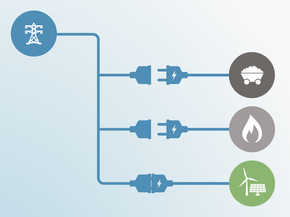Country Action
Overview
Whereas the Kyoto Protocol stipulated that developed countries should reduce emissions from international bunkers through the IMO, the Paris Agreement does not mention it. Further, the Paris Agreement provides that countries are to set “economy-wide” reduction targets, which implies that emissions from international bunkers should be included in government climate targets under the Paris Agreement.
In the absence of ambitious action through the IMO, which has made limited progress in reducing GHG emissions since discussions started in 1997, national action is critical to keeping the Paris Agreement temperature limit of 1.5°C within reach. National governments need take responsibility for emissions from international bunkers, and actively work to bring those to zero.
For countries that the CAT analyses, we track whether international shipping has been included in their net zero targets. This information is available on individual country pages.
Some countries have begun to address their international shipping emissions.
EU27
The European Commission included several measures relevant for international shipping emissions in its ‘Fit for 55’ package (European Parliament, 2021). These include:
- The expansion of the EU ETS to include maritime emissions
- The FuelEU Maritime Regulation setting GHG emission reduction targets for fuels
- The Alternative Fuel Infrastructure regulation (AFIR)
- Revision of the Renewable Energy Directive (RED III) - setting mandate targets for the uptake of RFNBOs in the maritime sector
- Revision of the European Tax Directive (ETD)
As of April 2023, a political agreement has been reached for the EU ETS maritime expansion, FuelEU maritime and RED III proposals. The EU ETS maritime expansion will regulate Tank-to-Wake (TtW) emissions. There will be a gradual increase in volume of emissions covered by the EU ETS, from 40% of the maritime emissions in 2024, 70% in 2025 and 100% in 2026. The emissions covered by the expansion of the EU ETS will cover CO2, and gradually methane and nitrous oxide, with a geographic scope of 100% of emissions from intra-EU voyages (voyages between any two or more EEA ports) and while at berth in EEA ports. It will also cover 50% of emissions from international voyages to and from an EEA port and a third country.
While the EU ETS will apply only to vessels larger than 5000GT, the reform of the EU ETS also requires monitoring of emissions from smaller vessels such as general cargo and offshore service vessels during the review process scheduled for 2026 (DNV, 2023; European Commission, 2021). The proposal sets out binding emissions reduction targets for GHG intensity in maritime fuels.
The targets will increase in stringency over five-year intervals, starting with a 2% reduction in 2025, 6% in 2030, 11% in 2035 and 75% by 2050. Additionally, a compliance mechanism applies a penalty to ship owners unable to achieve the target GHG intensity reductions of their fleets set by the FuelEU (Council of the European Union, 2023).
The revenues generated will be directed towards maritime decarbonisation projects (European Council, 2023). These regulations, however, lack equitable transition considerations, particularly around the need to support the maritime decarbonisation in third countries that will be impacted by the EU regulation of international shipping emissions (Petroni & Ancygier, 2023).
The revised directive on fuel taxation now includes navigation and covers intra-EU navigation, fishing and freight transport incentivising the use of zero or low carbon fuels. By 2030, under the Alternative Fuel Infrastructure Directive (AFIR), ports will need to provide shore-side power outputs to meet 90% of the demand, but the AFIR also includes provisions that port facilities to support LNG fuelled ships.
Worryingly, the regulation also incentivises the development of natural gas infrastructure at ports, leaving it to member states to decide on the level of deployment by 2025, risking being left with high-cost stranded assets.
In January 2019, the EU launched a Monitoring, Reporting and Verification system (EU MRV system), which requires ships calling at EEA ports to report their CO2 emissions through the EU MRV. As a result, the IMO implemented a similar measure, the IMO Data Collection System, which is a concrete example of national actions driving implementations within the IMO. The MRV data formed the bases for the EU ETS and FuelEU policy mechanisms, while the IMO DCS set the basis for the CII.
US
In July 2022, the US initiated the Clean Shipping Action proposal that will set carbon intensity standards on marine fuels, with a target to reach 100% zero emission fuels by 2040 (U.S. Government, 2022). In March 2023, the Port of Los Angeles signed an agreement with the port authorities of Yokohama, Japan, to establish a green shipping corridor (see Non-state actors and initiatives section). The US has focused on establishing green corridors in the Asia-Pacific region; it has existing agreements with Shanghai and Singapore, and is exploring options in India, Australia, Panama and the Republic of Korea.
In November 2022, at COP 27, the US and Norway signed the Green Shipping Challenge to pressure action at the IMO to tackle further emission reduction measures and challenge other countries to take further action domestically (DNV, 2022).
UK
The United Kingdom includes its share of international shipping emissions in its sixth carbon budget for 2033-2037 (Government of the UK, 2021; Transport & Environment, 2021).
The UK has indicated that it will include international shipping emissions in its 2050 net zero target, but has not yet enshrined this into its Climate Change Act (Government of the UK, 2021). At COP 27, the US and the UK announced the launch of a US – UK Green Shipping Corridor Task Force with the aim of establishing a green shipping corridor between the two countries. Additionally, in 2022 the UK opened GBP 60m in finances to support innovation in clean shipping projects relating to zero emission vessels, fuels and ports (UK Government, 2022).
China
China is considering expanding its own emissions trading scheme beyond the power sector, in accordance with the EU’s Carbon Border Adjustment Mechanism (CBAM). Industries being considered include cement, aluminium, steel, and iron. Steel and aluminium are frequently used in shipbuilding, and so these new emissions allowances would be highly relevant to the Chinese shipbuilding industry, the largest in the world.
National Plans
In November 2020, the IMO’s MEPC adopted resolution MEPC.327(75) to encourage member states to develop national action plans that will initiate shipping decarbonisation at national level (IMO, 2020). To date eight countries (Japan, Norway, Finland, India, Singapore, South Korea, the Marshall Islands and the UK) have published National Action Plans (NAPs) to address domestic maritime decarbonisation (IMO, 2022).
Non-state actors and Initiatives
Many of the world’s largest international shipping corporations have made commitments—of varying levels of ambition—to decarbonise their operations.
Maersk, owning and chartering close to 700 vessels as of May 2023, aims to have its entire business operations at net zero greenhouse gas emissions by 2040. In 2023, Maersk will use green methanol to fuel a carbon-neutral vessel journey from Ulsan, South Korea to Copenhagen, Denmark.
The Mediterranean Shipping Company (MSC) and Ocean Network Express (ONE) have committed to net decarbonisation and net-zero emissions by 2050, respectively. In contrast, COSCO Shipping, has set a target of carbon-neutrality for 2060, much later than other companies.
Several companies that have set zero-emissions targets by 2050 are enacting measures that directly undercut this goal. Hapag-Lloyd, for example, has a climate-neutrality target for 2045, but has entered a multi-year deal with Shell for the supply of Liquified Natural Gas (LNG). CMA CGM also considers transitionally adopting LNG as part of its sustainability strategy. These approaches will ensure that fossil fuels will continue to be part of the fuel mix beyond 2050 and represent lock-in investments and stranded assets, represent lost opportunities to financing the scale up of zero emission fuels.
Green Shipping Corridors
In November 2021, at COP26, the Clydebank Declaration was signed to initiating a partnership between countries, industry and relevant stakeholders to develop Green Shipping Corridors – a systems based approach to transition key shipping routes to accommodate zero emission fuel bunkers, ports, vessels and associated elements. As of 2022, 24 countries have signed on and multiple green shipping corridor initiatives have been proposed, though most remain at an early stage of development (GMF, 2022).
Of those moving quickly, the corridor between Sweden and Belgium has secured commitments from the port authorities, the shipping company, and the energy supplier. On the slower side, the US – UK green shipping corridor is expected to be implemented towards the end of the decade.
In 2023, a consortium of energy suppliers, ship owners, and key industries related to shipping, was formed to assess the feasibility of a EU-South Africa green shipping corridor. This would be the first green corridor connected to an African port outside of the Mediterranean region. If established, this green corridor would be an important step to ensure developing nations, including those on the African continent, are not left behind in the process of decarbonising international shipping (GMF, 2023).
Further analysis
Latest publications
Stay informed
Subscribe to our newsletter







